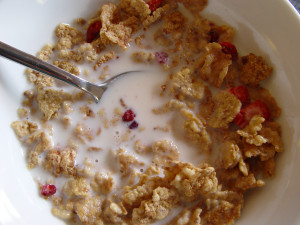by Dr Graham Stevenson, World Association of Sex Coaches Certified Sex Coach
We’ve heard the myths – that masturbation is unnatural, abnormal and harmful.
Why has the quiet private practice of masturbation attracted such attention? Maybe because it involves the genitals it connects with the tension in our core beliefs about ourselves and life. The ancient Chinese, for example, forbade masturbation amongst men, believing it killed the vital yang essence, but they freely allowed women to masturbate, whom they believed had limitless ying. In contrast, the Egyptians believed their god, Osiris, had created the world this way. For them it was a creative and empowering act and they would ritually masturbate before the images of their gods to honour them. In many other cultures it was thought to be normal and even encouraged.
 Western culture has been largely defined by Christianity, which, despite there being no reference to masturbation in the Bible, had strong views on the subject. The early church fathers, amongst whom St Augustine had the greatest influence, believed that “sexual pleasure can never be without sin.” This led some men to castrate themselves in their zeal to be spiritual and to be rid of the temptation.
Western culture has been largely defined by Christianity, which, despite there being no reference to masturbation in the Bible, had strong views on the subject. The early church fathers, amongst whom St Augustine had the greatest influence, believed that “sexual pleasure can never be without sin.” This led some men to castrate themselves in their zeal to be spiritual and to be rid of the temptation.
As the church grew in power and influence it became obsessed with the need to control people and Penitential Books were written that detailed every sin with its remedy. In these books, masturbation was seen to be worse than fornication. ‘The Heinous Sin of Self Pollution’ was the title of a book published by Dr. Bekker in 1710 followed by a similar volume from a Dr. Tissot in 1741. This lead to more than a century of assigning anything from weakness and dimness of sight to madness to the ‘sin’ of masturbation, for which many men and women were institutionalised.
A war of attrition on the genitals themselves began to take place as a prominent London surgeon called Isaac Baker Brown started performing clitoridectomies in 1858 to treat masturbation in girls. He took his expertise to America where they went so far as to remove the ovaries and even carried out infibulation. Male circumcision, which is not a requirement of Christianity, became widely adopted at this time as it, too, was regarded as a way of preventing masturbation
Some believed a bland diet would keep young people from getting excited. This was the inspiration behind Graham Crackers and Corn Flakes, invented by Dr. John Kellogg. Dr. Kellogg believed the children of ‘masturbation sufferers’ would “…be quite certain to be puny, weak, scrofulous, consumptive, rickety, nervous, depraved in body and mind.”
It was not all bad news at that time as doctors such as Havelock Ellis and Freud were earnestly seeking a scientific perspective and Dr Joseph Granville, in his efforts to heal a new condition in women called hysteria (a condition due in part to the lack of masturbation), patented the first vibrator! How ironic that a tool invented by men to control women’s orgasm actually became the means of their freedom to orgasm for so many women.
The case against masturbation began to crumble, due to the lack of substantive evidence, until it was finally accepted that it was actually harmless. The ideas of the day were also challenged by the enigma of the clitoris. Even the limited attention given to female sexuality at that time highlighted the importance of the clitoris. But it was hard for a fundamentally pleasure-averse society to accept the fact that the clitoris’ only purpose seemed to be for pleasure.
The shift to sex-positivity has been due to many factors but a major player for women has been, Betty Dodson, the Mother of Masturbation. Through practical workshops many women have come to discover and enjoy their sexuality. Now, for both men and women, masturbation is largely accepted as normal and the easiest and safest way to learn about one’s individual sexuality.
The word masturbation, which was often associated with the release of sexual tension, is now being replaced with more sex-positive expressions such as self-pleasuring and self-love. Viewing the practice within these new perspectives challenges many subconscious attitudes. My own experience is that it helped to highlight an aversion to pleasure, a negative body image and forced me to face personal and social shame at being a sexual being. The result has been an increased confidence in simply being me. It has made me aware of how disconnected many people are and how culturally shielded we are from the path of genuine self-discovery.
It has been observed that foetus’ will touch their genitals and so it is perfectly normal to discover them further in the first years of life. It is also only to be expected that pubescent teenagers will start to masturbate as they explore their newly awakened bodies and what feels good. The really challenging concept to bring into our western mind set is that our bodies were primarily intended for pleasure and not for pain. This means that life should be good and enjoyable and to live it properly we have to know and accept our bodies.
 Masturbation is now one of the primary exercises used in the treatment of many sexual issues. It is a way of taking people back to retrace the natural path of sexual self-discovery and is one of the building blocks to owning and valuing one’s sexuality. This is what builds self-worth and when we act in accordance with our values we build self-esteem and confidence – all good things in terms of mental and physical health and wellbeing.
Masturbation is now one of the primary exercises used in the treatment of many sexual issues. It is a way of taking people back to retrace the natural path of sexual self-discovery and is one of the building blocks to owning and valuing one’s sexuality. This is what builds self-worth and when we act in accordance with our values we build self-esteem and confidence – all good things in terms of mental and physical health and wellbeing.
Like the captive orca in Free Willy, each of us has to make a leap over the constraints of culture, religion, and society to find our personal freedom. Masturbation as a means of loving yourself is a powerful practice – the degree to which you love yourself is the degree to which you can love others.

